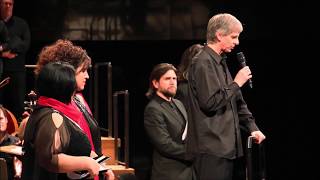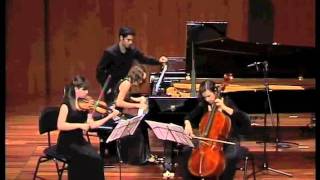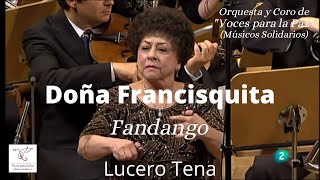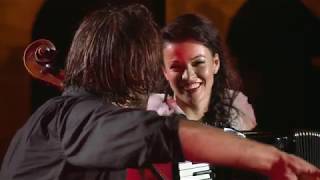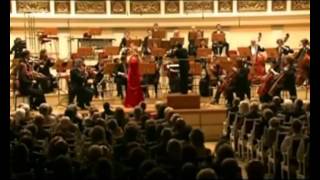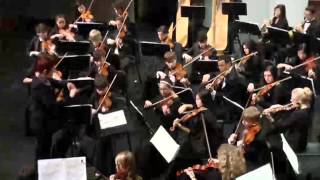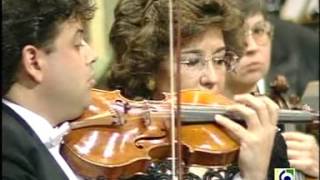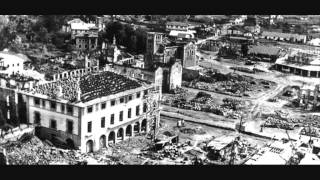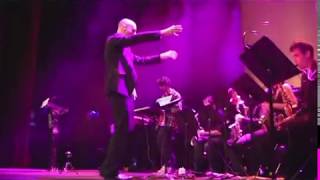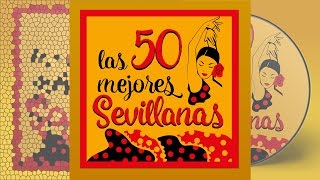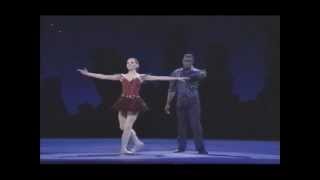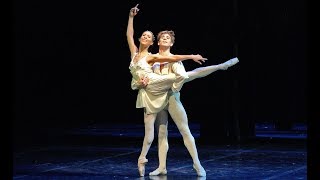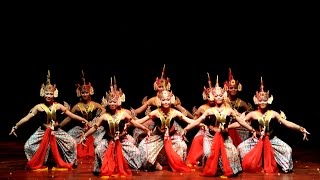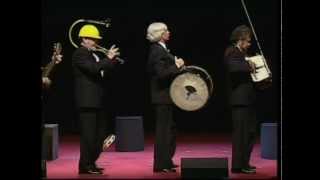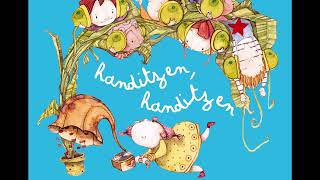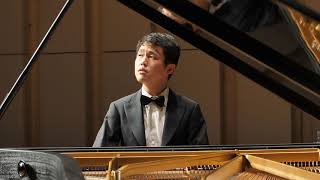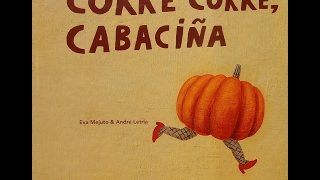April 23 begins the April Fair or Seville Fair
On April 26, 1937, fascist planes bombed the defenseless town of Gernika
On April 28, the day of San Prudencio, Patron of Araba, is celebrated
Recommended music videos for initiation to classical music
Pablo Sorozábal (1897-1988) was born in Donostia/San Sebastián , according to his own memoirs, “in the bosom of a proletarian and Basque-speaking family”. He began his violin studies at the San Sebastián Municipal Academy of Music ; at the age of 17 he joined the San Sebastián Casino Orchestra and at 21, of the Madrid Philharmonic . Granted by the Gipuzkoa Provincial Council, he completed his studies in Leipzig and Berlin . Due to his republican ideas, after the Civil War , he was isolated as a composer with what it cost him to premiere the different zarzuelas he composed in Madrid . As conductor of the Madrid Symphony Orchestra he ended badly in 1952 when he was forbidden to play Shostakovich 's Leningrad Symphony , which led to his resignation.
The bombardment of Gernika , a city that is a symbol of the Basque privileges, was an air attack on the defenseless civilian population of this Basque enclave. The massacre was carried out on April 26, 1937 , by the German Condor Legion and the Italian Legionary Aviation , who were fighting in favor of the rebel side against the Government of the Second Spanish Republic . In memory of that massacre, Sorozábal finished rewriting the cantata Gernika in 1976, which we present today, for choir and orchestra with lyrics by Nemesio Etxaniz ; cantata that is a reworking of the Gernika funeral march written at the time for a group of txistus and horns. The version that we offer today is conducted by the Argentine maestro Xabier Iñaki de Arza Blanco .
Wolfgang Amadeus Mozart (1756-1791) is considered one of the three giants of musical composition along with Bach and Beethoven . Child prodigy born in Salzburg , at the age of six he mastered the keyboard and the violin and began to compose. His father, Leopold exhibits him in exhausting tours of different European courts. A prolific composer (more than 600 works written from the age of five until his death), he cultivated all kinds of musical genres: piano works, chamber music, symphonies, concertante works, choral works, operas... each and every one of them, masterpieces of its gender. His operas The Magic Flute, Don Giovanni, Cosí fan Tutte, and The Marriage of Figaro are among the 10 most performed operas in the world. He died in Vienna at the age of 35.
Chamber music is that composed for a small group of instruments, as opposed to orchestral music . The name comes from the places where small groups of musicians rehearsed during the Middle Ages and the Renaissance . These rooms, not very large, were called chambers. Relegated until then to the halls of the aristocracy, chamber music gradually began to spread in small concert halls and in private homes. This is induced by the access of the bourgeoisie to instrumental practice and because, financially, it was much more profitable than an orchestra. There are two details that characterize a chamber work: 1) each musician plays a different part and 2) there is no conductor; the musicians are situated so that they can face each other, for the best coordination.
Camera groups . Theoretically there is no maximum limit of instruments; but, in practice, most compositions range from two to twenty. There are many instrumental combinations, the most important of which is the string quartet . Other usual chamber groups are the piano duet, the string trio, the piano trio, the piano quintet, the string quintet, and the wind quintet; although wooden and metal instruments are less common. The chamber orchestra , with or without wind instruments, is a small orchestra and therefore with the possibility of playing music in a small room.
Mozart 's Piano Trio in C Major K.548 , written for violin, cello and piano, consists of three movements: I Allegro. II Andante cantabile. III Allegro. Today we offer the third movement in version of the Trio Areti .
Amadeo Vives (1871-1932), a composer born in Barcelona , is the author of numerous songs and more than a hundred stage works, including Bohemios , Maruxa and, above all, Doña Francisquita , considered among the masterpieces of the genre. . He began receiving music lessons from his brother at the age of five; later with José Ribera he would study piano, harmony and composition; he collaborated with Lluis Millet in founding the Orfeó Catalá , which would begin its journey with Catalan songs harmonized by Amadeo Vives . At the age of fourteen he had composed several sonatas and at the age of 24 he premiered his first opera in Barcelona . Later he moved to Madrid where his stage premieres received successful responses and recognized prestige.
The Fandango is a dance with lively movement and ternary rhythm that derives in multiple forms; localized dance both in the Spanish state and in the Latin American community; while Doña Francisquita , whose fandango we can see today, is a zarzuela in three acts based on La discreta enamorada by Lope de Vega . Today we offer it under the baton of Miguel Roa (1944-2016), a conductor committed to spreading the Spanish zarzuela, and with Lucero Tena (1938), a flamenco dancer, playing castanets.
Ástor Piazzolla (1921–1992) was born in Mar de Plata , Argentina; At the age of three he moved with his family to New York and at the age of thirteen he met Carlos Gardel . On his return to Argentina , he received classes from Ginastera while he regularly went to Café Germinal where tango music was the daily bread. He is part of different formations, where the purists considered his innovations as the “murder of tango”. With a certain dose of pessimism, he moved to Paris , where he contacted Nadia Boulanger who made him believe in himself and in the possible conjunction of tango with classical music. He returned to Buenos Aires with such activity that in 1973 he suffered a heart attack, although he continued with his compositions and recordings until in 1990 when he suffered a thrombosis in Paris that he could not overcome.
Adiós Nonino is a tango musical piece, composed by in 1959, in homage to his father, Vicente Piazzolla , based on another of his tangos entitled "Nonino", written five years earlier in Paris , also in homage to his father. . It is a strictly instrumental tango, of which José Luis Person Properzi suggested that " Adiós Nonino " has reminiscences of George Gershwin ( Piazzolla himself came to recognize it, given his father's preference for this composer) and of Brian Wilson , this last especially in the chords and in the timbres that it uses. In today's video it is maestro Piazzola himself who is playing the bandoneon.
Today we present the version offered to us by accordionist Ksenija Sidorova with cellist Hauser Stjepan accompanied by the Zagreb Philharmonic Orchestra conducted by maestro Ivo Lipanovic .
Recommended classical music videos
The Austrian composer Joseph Haydn (1732-1809), whose brother Michael Haydn was also a notable composer, was one of the main pillars on which classicism (1750-1820) was based. At the age of six he began his musical studies on the harpsichord and violin. At the age of eight he was admitted as a choir member at St. Stephen's Cathedral in Vienna where he continued his studies in singing, piano and violin. After changing his voice, he had to survive by working multiple jobs, while studying composition by analyzing the works of Carl Philipp Emanuel Bach . He maintained a close friendship with Mozart and was a teacher of Beethoven . He established the main bases of the sonata form and the formal structure of the string quartet and the symphony. He died at the age of 77 in Vienna .
The Concerto for Trumpet and Orchestra in E flat major is the only concerto for this instrument by Haydn . It was composed by Haydn in 1796, at the request of Anton Weidinger , who spent about 4 years testing his new instrument with minor works and fine-tuning his own technique. He premiered it on March 22, 1800 in Vienna . It is the first concert for a five-key trumpet, an instrument created to overcome the limitations of traditional bronze instruments; instrument that would be surpassed by the current three-valve trumpet created in 1813. The concerto is articulated in three movements: I (0´29´´) ALLEGRO .-. II (7´10´´) ANDANTE .-. III (11´00´´) FINAL ALLEGRO. Today's version is offered by the English trumpeter Alison Balsom
Modest Mussorgsky (1839-1881) was a Russian composer who strongly advocated and practiced the goals of the group of The Five ( César Cui, Milij Balakirev, Modest Mussorgsky, Nikolai Rimsky-Korsakov, and Alexandre Borodin ). His mother, Yulia Ivanovna, a professional pianist, introduced him to the study of the piano at the age of six; at the age of 13, he entered the Imperial Guard Officers Military Academy , while the following year he published his first composition, a polka ; around this time he met Balakirev from whom he received composition classes and information about what would become the group Los Cinco ; At the age of 19, he abandoned his military career to be able to dedicate himself entirely to composition. He died at the age of 42 after a series of epileptic seizures.
Pictures at an Exhibition is a famous suite of pieces, composed by Mussorgsky in 1874. Mussorgsky wrote the work for piano, although it has been best known and best performed by the orchestration that the composer Maurice Ravel (1875-1937) made of it in 1922. Mussorgsky composed this work inspired by ten paintings and drawings included in a posthumous exhibition by his great friend, the artist and architect Viktor Hartmann (1834-1873), who was only 39 years old when he died. The exhibition was organized by Vladimir Stasov (1824-1906), a writer, music critic and adviser to the Balakirev Circle . As a tribute, the composer wanted to "draw in music" (program music) some of the paintings on display and dedicated the score to Stasov .
Joaquín Turina (1882-1949) was a pianist, composer and conductor born in Seville and author of the most relevant works of Spanish Impressionism along with Falla and Albéniz . Since he was a child, considered a "prodigy", he improvised virtuously on the accordion; Although he began his piano studies at the same time as high school, his parents died in 1903 and he moved to Paris where he studied composition with Vincent D'Indy , earning a living with his piano performances. In 1913, at the outbreak of the First World War, he returned to Madrid where he permanently established his residence. He was named academic number of the Royal Academy of Fine Arts of San Fernando , Seville's favorite son, in addition to receiving other important awards such as the Grand Cross of Alfonso X the Wise .
The Sevillian Symphony is a symphony by Joaquín Turina , composed from April 5 to July 3, 1920 and premiered on March 30, 1921 at the Teatro Real in Madrid by the Madrid Symphony Orchestra conducted by Fernández Arbós. considered the first important piece of this genre produced in Spain in the 20th century . It won first prize in the Composition contest at the Gran Casino de San Sebastián and is structured in three movements: I (0´24´´) PANORAMA .-. II (8´25´´) BY THE RIVER GUADALQUIVIR .-. III (16´00´´) PARTY IN SAN JUAN DE AZNALFARACHE.
Today we offer it in a version of the RTVE Orchestra conducted by the Valencian maestro Enrique García Asensio .
Francisco Escudero (1912 - 2002) was a Basque composer born in Zarauz (Gipuzkoa). He began his musical studies at the San Sebastián Municipal Music Academy and continued them in Madrid , Paris and Munich . In 1937 he obtained the National Prize for Fine Arts ; in 1945 he was appointed director of the Bilbao Choral Society ; in 1947 he won the first prize in the Tribute to Falla Contest ; in 1948 he obtained the Chair of Harmony and Composition at the San Sebastián Conservatory of Music ; in 1957 he received the National Music Award . Among his most outstanding works are the funeral oratorio Illeta , the symphonic poem Arantzazu , the Sacred Symphony , the Concerto for cello and orchestra , the Basque Concerto for piano and orchestra , and the operas Zigor and Gernika.
Gernika is an opera in four acts by Francisco Escudero , with a libretto in Basque by the composer himself, Carmelo Iturria and Augustin Zubikarai , based on an idea for a plot by Luis Iriondo . It premiered in a concert version at the Teatro Arriaga in Bilbao on April 25, 1987, among other events that commemorated the 50th anniversary of the bombing of Gernika . The idea of creating a work about the horror of the bombed Gernika came to Francisco Escudero , in exile; although it would not be until 1985 when he finished this opera commissioned by the Bilbao Choral Society .
Today we offer the audio of some fragments of the third act of the opera corresponding to the scene of the bombing in a version of the Bilbao Choral Society and the Euskadi Symphony conducted by maestro José Ramón Encinar .
Recommended music videos for all tastes
Retreat of San Prudencio . There has been a lot of discussion about the origin of the gasteiztarra retreat, and there are still several versions today. What is clear is that it was used centuries ago to warn the population that the walls were closing at dusk on holidays. The dates differ: for some it is from medieval times and for others from the time of the Napoleonic invasion. But already at the end of the 19th century, the retreat is associated with April 27 (the eve of San Prudencio), when it was played through the streets of the city. But since the 1920s this military march has sounded solemn from the balcony of the Foral Palace and from the Town Hall . There are nine toilet calls, one every 15 minutes, and that precede the purely said party.
Today we present a free version of the official retreat offered by the Gazteiz Big Band composed by Jimmy Bidaurreta .
The sevillanas , formerly called seguidillas sevillanas , are a typical Andalusian music and dance, especially in Seville, Huelva and Cádiz , danced in couples and with a festive nature. The music has its origin in the La Mancha seguidilla, from which it inherits its structure but, due to contact with other Andalusian music, its sound has become more flamenco. As for the dance, which would be added later, it takes its movements from the bolero school . They are not a flamenco style, properly speaking, because their dance is choreographed and their lyrics have been simplified to accompany the dance, although they do bring together various aesthetic elements of flamenco. The sevillanas are always performed in series of four and are made up of a simple seguidilla of four verses and a chorus of three.
Catherine Russell (1956) is an American jazz and blues singer. His voice has been described as "reminiscent of many of the great jazz and blues singers. His phrasing is impeccable and his delivery relaxed and effortless.'" The New York Times stated that his performances project "a forceful, good humor. and intelligence that surround the room in a bonhomie atmosphere". Her rendition of the Irving Berlin tune "Harlem on My Mind" was highly praised by the Jazz Times who stated that "if there's one answer to Dinah Washington today, it's surely Catherine Russell : the same phrasing of bluesy vocal prowess is found with the jazz stylist; the same power of espresso strength; the same immaculate clarity; the same ability to seamlessly transition from bold to torchy."
Kylie Minogue (1968) is an Australian singer, songwriter and actress of Welsh origin. She is widely known for her eighth studio album Fever (2001) and her hit single " Can't Get Yo of My or Out Head ", known as the most played song of the year, which earned her two Brit Awards honors in 2002. With a total of 80 million musical productions sold worldwide throughout her career, Minogue is Australia's best-selling artist and one of the most successful in the industry overall. Kylie Minogue has been the only musical artist to reach #1 on the British charts, during the 80s, 90s, 2000s and 2010s.
Recommended peculiar videos
George Gershwin (1898 –1937) was an American composer appreciated for having known how to combine jazz with classical music . From a young age he began to write his first songs, premiering his first musical on Broadway with his brother Ira as lyricist, a company he would never leave. From the age of twenty he began to compose works designed for concert halls with which he obtained renowned successes. Aware of his formal deficits, he traveled to Paris to complete his training with Stravinsky , who, after asking him about the money earned in a year, replied that he was the one who should take classes with Gershwin . Something similar happened with Ravel , because he blurted out that "Why do you want to be a second-rate Ravel , when you can be a first-rate Gershwin ?"
George Balanchine (1940-1983) was a Russian ballet master who bridged the gap between classical and modern ballet; one of the leading ballet masters of the 20th century .
Who Cares is a ballet created by George Balanchine to the music of 16 songs by George Gershwin with the idea of showing the exuberance of urban life in New York . The interpretation is provided by the New York City Ballet .
Sergei Prokofiev (1891-1953) was a Soviet composer, pianist and conductor, considered one of the leading composers of the 20th century and creator of numerous masterpieces in different musical genres. His works include such popular works as the Love of the Three Oranges march, the Lieutenant Kijé suite , the ballet Romeo and Juliet , Peter and the Wolf ... Within the established forms and genres in which he worked, he created seven complete operas, seven symphonies, eight ballets, five piano concertos, two violin concertos, one cello concerto, and nine completed piano sonatas. After his death, Arthur Honegger proclaimed that Prokofiev "will continue to be for us the greatest figure in contemporary music."
Romeo and Juliet is a ballet in three acts divided into thirteen scenes, including a prologue and an epilogue. It is one of the composer's most appreciated works, based on the high melodic inspiration, the great rhythmic variety and the memorable character of the main themes (the famous and sinister Dance of the Knights and its various variations, the delicate and abundant theme of Juliet...). Today we present a small selection of the ballet with the Berlin Staatsballett corps de ballet.
Dance in Indonesia (in Indonesian, Tarian Indonesia ) reflects the diversity of the country's ethnic groups and their cultures. There are more than seven hundred distinct ethnic groups in Indonesia : rooted Austronesian peoples and Melanesian tribal forms are evident, plus a range of influences extending from its neighboring countries in Asia and even in the West , through colonization . Each ethnic group has its own dances, making the total number of dances in Indonesia more than three thousand native dances. The old traditions of dance and drama are now preserved in many dance schools, this being not only in the courts, but also in government-run venues and supervised art academies.
Gemrentang Jati is a dance, which seen from its function, can be classified as a dance that works as a presentation of a story, because the dance itself tells us about the Majapahit Kingdom in Kediri , Java (Indonesia). Observing the symbols and movements, this dance symbolizes not giving up easily, this opinion is supported by a quote from the song's lyrics that says "Not distracted despite many obstacles". The Gemrentang Jati dance is usually performed in groups; the concept of art taken in this dance is the concept of Traditional Classical Dance .
Les Luthiers is a music/humor ensemble that was born in Buenos Aires in 1967 and that uses vocal and instrumental music as the fundamental basis of its shows, with the characteristic that most of the instruments used are made by themselves (hence the name of Luthiers , “instrument makers” in French). They have been recognized with illustrious distinctions both in their native Argentina , as well as in Spain and the USA .
Recommended music videos for children
Various Wikipedia articles have been used to write these texts.
The texts of Videomusicalis are written in Basque, Spanish and English.





